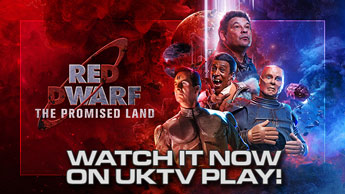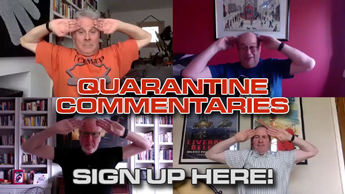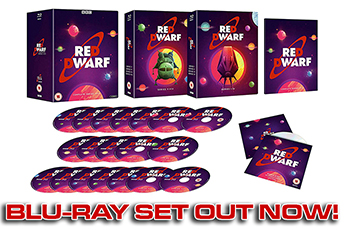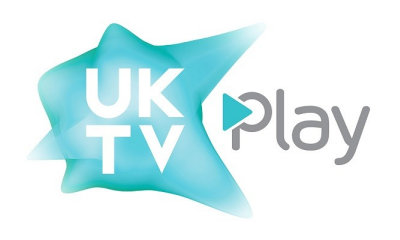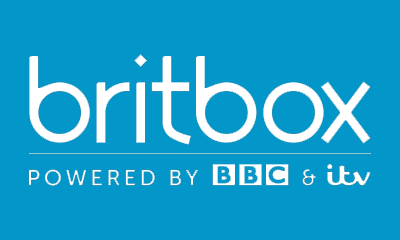 |
Flibbles In Space A few weeks ago in a galaxy quite, quite near, the showbiz penguin tracked down the man who waited for hours for Red Dwarf to fly past and made Blue Midget stagger, fly and dance - although not all at the same time - Chris Veale. |

Andrew Ellard
Mr Flibble whispered his first question: "You had to replace a lot of the model shots with CGI (Computer Generated Imagery) in rather a hurry - did you come to the rescue of SEASON VII?"
It's true to say I came on board very late in the day. I understand there had been some problems with the model shots they were getting back, they weren't looking as good as they had hoped, and they were getting very close to delivering to the BBC. Looking back on it, considering I did about fifty shots in three weeks, it's not bad!

It was all quite a chaotic set-up, because I was working on my old equipment, which I'd had at college, rendering all the shots, and driving across to Farnham - which is about an hour away - where they were putting all the shots out onto tape, then they were couriered up to London. It wasn't the most elegant set-up, but we got a surprising amount done in three weeks.
The shots Mr Flibble liked most were of Starbug passing over the camera toward a sun - what made those so good?
Basically Ed [Bye] wanted air-to-air shots of Starbug flying around, and to do that I had to give him shots of Starbug on a blue screen, which were then composited in. Unfortunately, we didn't have the technology to composite it with motion blur, so we had to add a post effect which made it look a bit weird.
The sunrise shots were separate shots which I envisaged, I did about two or three of those which were complete with the backgrounds. [There was] a little bit more time spent on those, and the rest of the shots were put together in the edit suite.
You must be pleased by the feedback from the REMASTERING and for VIII - did having more time (and money) make a difference to what you could achieve?
Oh yes. For the remastering and series VIII I had a lot more technology here, a new computer and different software, and I had it all tied up with a video deck so I didn't have to run around transferring it. The equipment could actually cope with quite large models, quite large scenes, and I could composite it in-house here and deliver it. So immediately things were being done much quicker and looking a lot better.
What was the toughest to do amongst the first remasterings, series I-III?
The two toughest things I can think of were: firstly the Red Dwarf ship - because they actually built a fantastically detailed model. I turned up and had to take a lot of photographs of it, to transpose it into the computer, and that was quite a mammoth job, translating it into the computer.

Originally for the remastering, for the closing shot of the shows, we'd fly down the back of the Red Dwarf, I think they thought the CGI version wouldn't be detailed sufficiently to do that kind of shot, that they'd have to do it with the model. I spent two or three months building it up in CG and in the end it turned out it was sufficiently detailed to do that in shot. It was probably over detailed! (Laughs) It's quite demanding working on Red Dwarf considering that sometimes they want a nice wide shot and you don't see any detail and the next minute they'll be going, "Oh, let's have a nice close-up." (Laughs) I have to be prepared for that.
So that was a tough one. The other tough one was the drunk Blue Midget shot, which we spent quite a while talking about, but it worked quite well in the end. It's really a process of sitting down with Doug and Ed and looking through shows, thinking of things that they wanted to do back then but couldn't, and then trying to think how they could do them now. Because obviously with digital effects it's easier to a certain extent to do things which would be more complex to do with models.
Mr Flibble said he hopes he doesn't get remastered and replaced by a CGI effect - he'd lose all the repeat fees! He then asked, "What ADVANTAGES do you think CGI has over models?"
I don't think they would have been able to do the dancing Blue Midget with models. They could have done stop-motion I suppose, but the problem you have with stop-motion animation is you don't get motion blur. I know ILM [Industrial Light And Magic, George Lucas' effects company] did something on Star Wars: Episode V - The Empire Strikes Back, where they actually moved the model as it was being photographed, frame by frame, which sort of replicated the motion blur. But it's a very long and expensive way of doing things.
We filmed a lot of footage of Danny dancing, with another dancer taking the place of Blue Midget. I took that into my computer and basically matched the movements to the Blue Midget. That whole sequence, which was probably about sixty or seventy shots, took about two weeks to do. It was a fairly quick turnaround considering we'd spent months and months trying to plan it and get it all working. It turned out pretty well.
That is an advantage, but another thing to remember with that sequence - and Blue Midget in general - is the actual look of the spaceships come from models. There was a Blue Midget model built, everything is photographed, because I personally find that real objects which are photographed with textures look nicer than something that's artificially built up.
Mr Flibble said he gets bored easily. How long does it take to RENDER an image?
For series VII I had about three or four machines rendering solidly, and normally the rendering time's not too bad. The real killer was the Red Dwarf spaceship, that can take quite a while. The end title sequence of the remastered shows, which is probably about sixty seconds, that took a total of about a ten days just to render. That was quite a long one. (Laughs) I got it first time, so that was okay! (Laughs)

What are you looking to do in the FUTURE?
At the moment I'm working on a short animation which I'm gradually putting together. It's actually a remake of what I did for my degree project. It's like Toy Story with teeth!
You've got your tag-line right there!
It's not about toys - I'll get into trouble if I say it's about toys! (Laughs) - but it's an idea I thought about even before Toy Story came out, it was something I was doing at college. So I've been remaking that, trying to put that together, and I'll ideally sell that as a short animation.
Mr Flibble, by now rather predictably, asked if there was a role for a penguin. Andrew pressed on to find out what Chris has been doing for Grant Naylor recently...
We've been doing some stuff on Weird City; ideas, putting that together - which looks really exciting, and the scripts are really, really good, really excellent.
Do you have a favourite movie effect sequence?
I wish I got out to the cinema more than I do! (Laughs) The big "wow" for most people in my line of work was probably when Jurassic Park came out. That was the first time we saw realistic looking skin and animals, breathing animals, all CG created - looking back at it now it looks fairly run of the mill, but at the time it was big news. These days everyone's doing it! (Laughs)
Mr Flibble said "Look who's talking!" Referring to the T-Rex for RDVIII.
It wasn't quite ILM standards! (Laughs) I was watching the Walking With Dinosaurs show, that's been very popular, and they spent three years working on that - building up, testing everything. I probably spent about three weeks on Red Dwarf's T-Rex! (Laughs)
Mr Flibble enjoyed talking to Chris Veale, and now that it's over... Mr Flibble is very cross.

